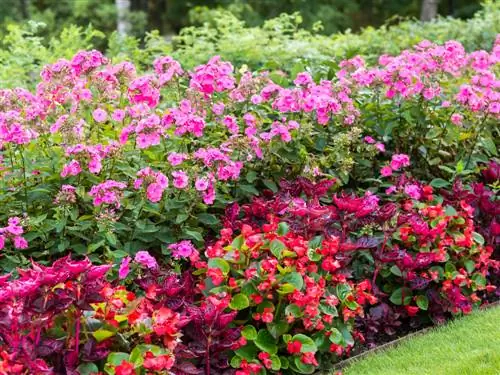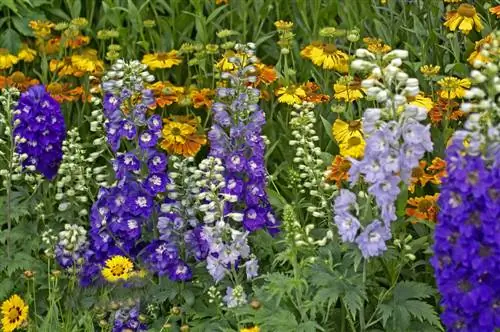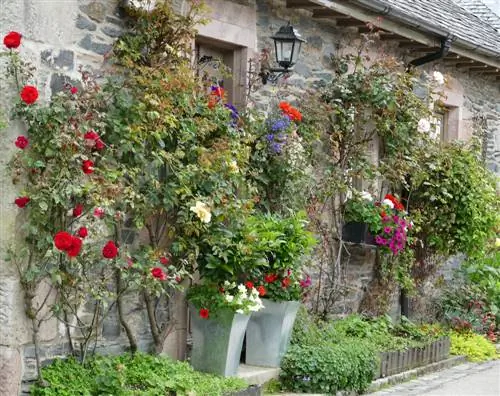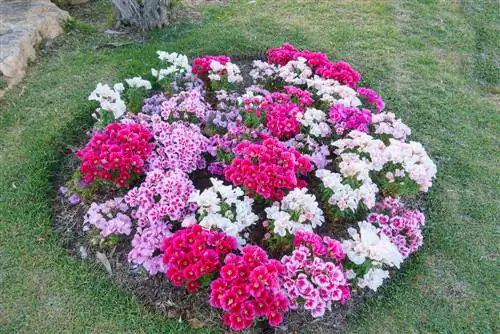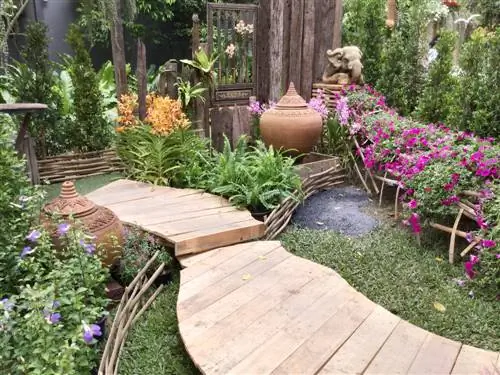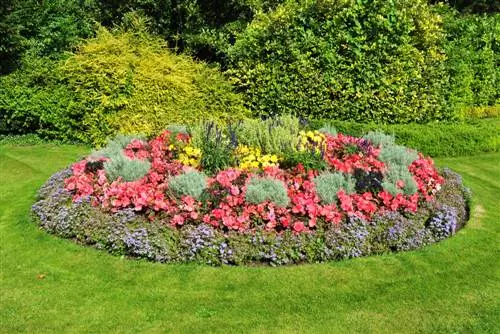- Author admin [email protected].
- Public 2023-12-16 16:46.
- Last modified 2025-01-23 11:21.
One of the most beautiful elements of garden design is a colorful flower border with a good selection of plants. Perennial perennials are ideal for this, of which there are countless types and flowers in thousands of color combinations.
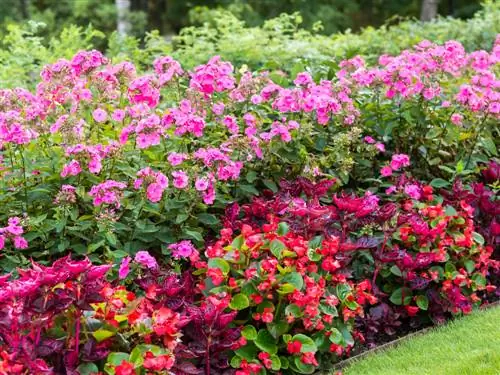
How to design a perennial flower bed?
A perennial flower bed can be created by combining perennials, shrubs, summer flowers, tuberous plants and attractive vegetable plants. Evergreen plants and bulbous flowers provide color and variety, even if the perennials die back in autumn.
Perennial plants reduce workload
Perennials are at least two-year-old plants without wood. Most species grow herbaceously and die back to the ground in the fall. In spring, however, new shoots sprout from the roots, which are so securely protected from frost, and the plant blooms again in all its beauty. However, some types of perennials are also evergreen and cover the ground with their shades of green in winter. These include, for example, the Christmas rose (Helleborus niger) and other species of hellebore (Helleborus). In some locations it actually blooms around Christmas time, but in most environments and in heavy soils the flowers do not appear until spring. But no matter which perennial plant you choose, it significantly reduces the work required in the flower bed because you don't have to replant or sow it every year like annual summer flowers.
Perennial borders or mixed beds?
A real perennial border only contains perennials - but no shrubs, tuberous plants or other plant species. This type of border is very labor intensive and plants that die before others even bloom leave unsightly gaps. For this reason, this form of bed is somewhat out of fashion today. In a mixed border, on the other hand, you will find many perennials, but in conjunction with shrubs, summer flowers, tuberous plants and possibly even attractive vegetable plants. During the growing season, gaps are filled by shrubs with decorative foliage and when the perennials die back in the fall, evergreens and bulbs continue to provide color and an interesting focal point.
The most beautiful perennials for perennial flower beds
The tall white daisies, the pale mauve-colored scabiotes with their abundance of tiny flowers and the wonderfully fragrant phlox with their heavy umbels in pink and orange tones are typical for traditional herbaceous borders. All of these perennials get along well with other flowers and bloom for a very long time. Daylilies and African lilies have band-shaped leaves that create a good contrast. The sheaf (Achillea) has feathery leaves and tiny daisy-shaped flower discs. 'Gold Plate' is a popular tall variety with impressive bright yellow flowers. This genus goes well with many other perennials such as astilbe, cranesbill or lady's mantle.
Tip
Self-seeding plants also fit well into a perennial flower bed. The low-growing lady's mantle sows freely and therefore fits best at the edge of the bed.

